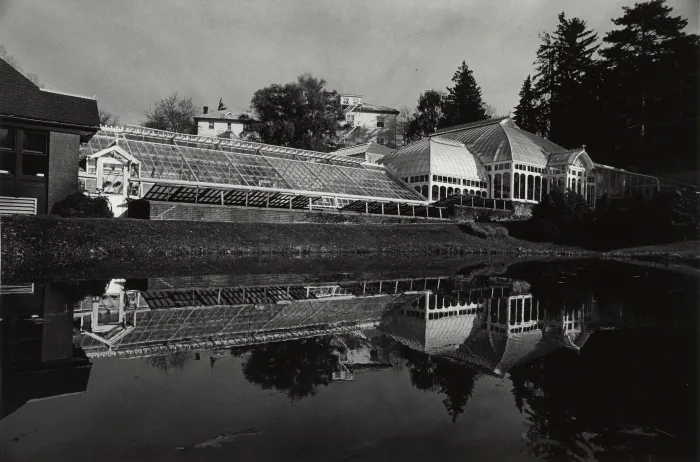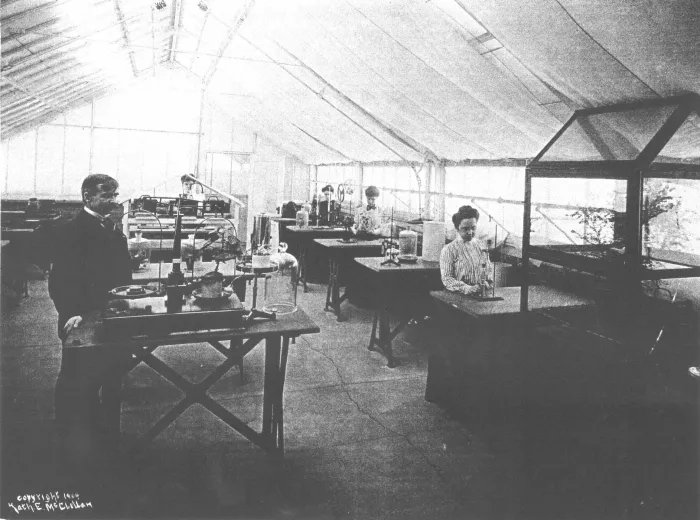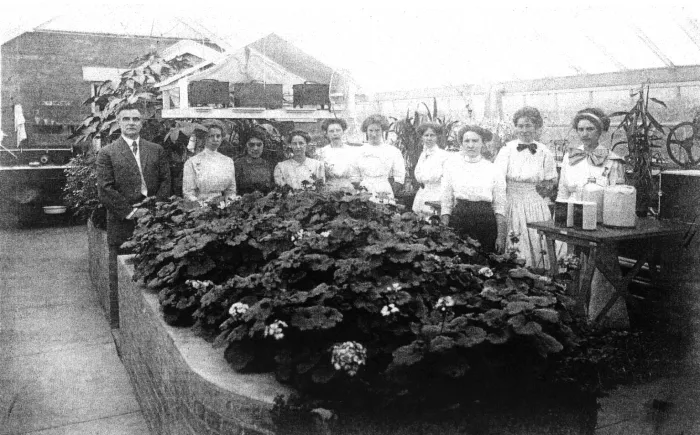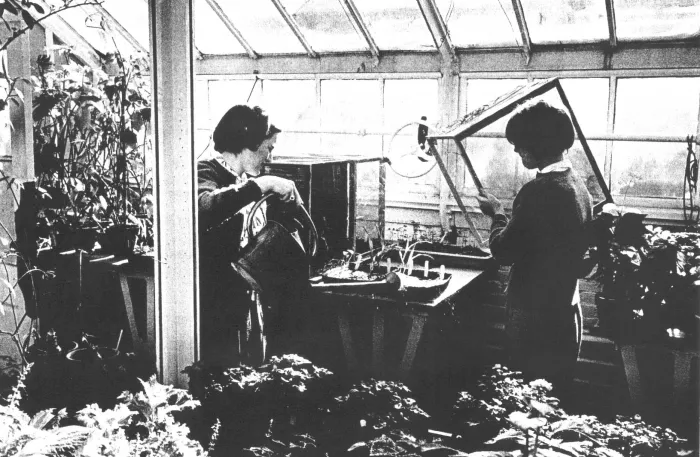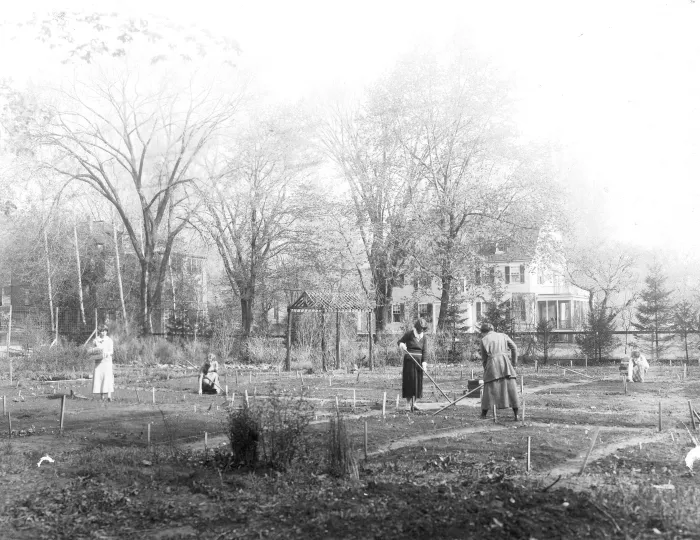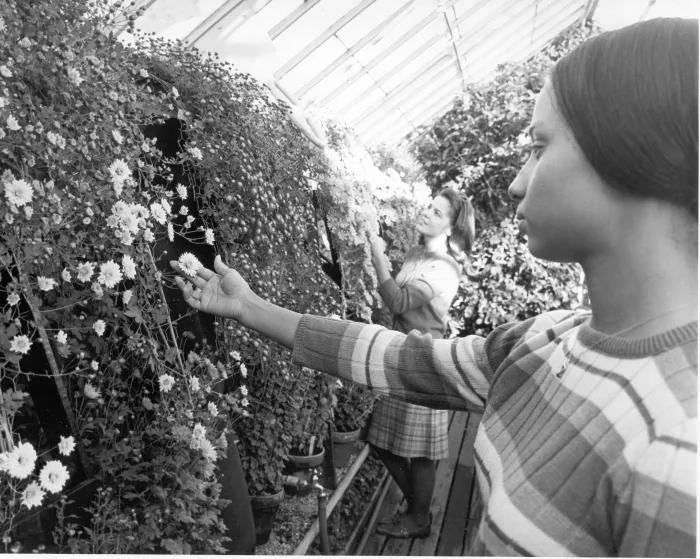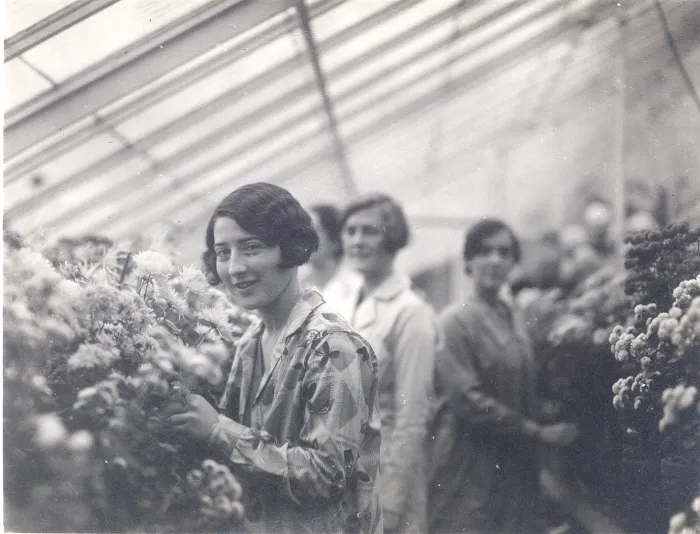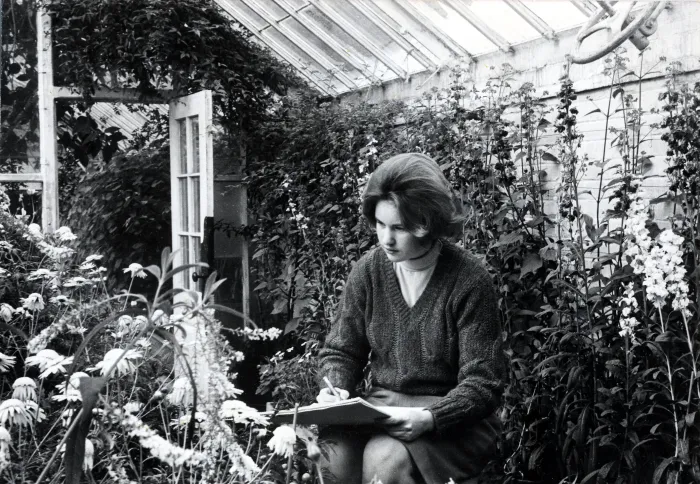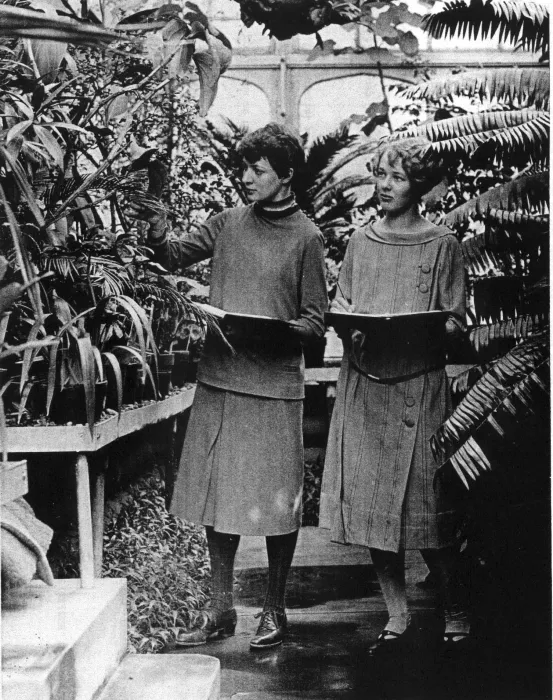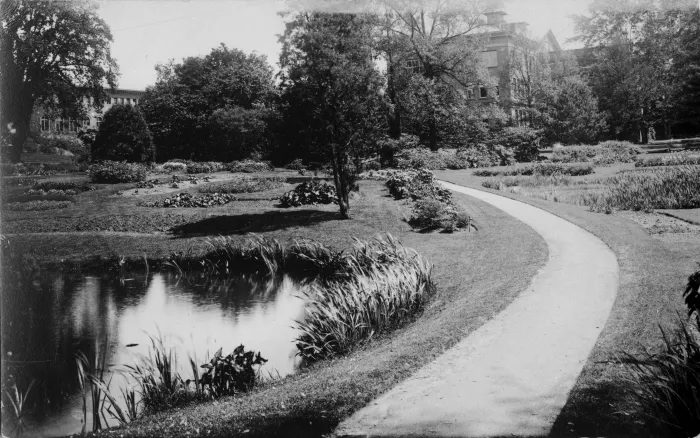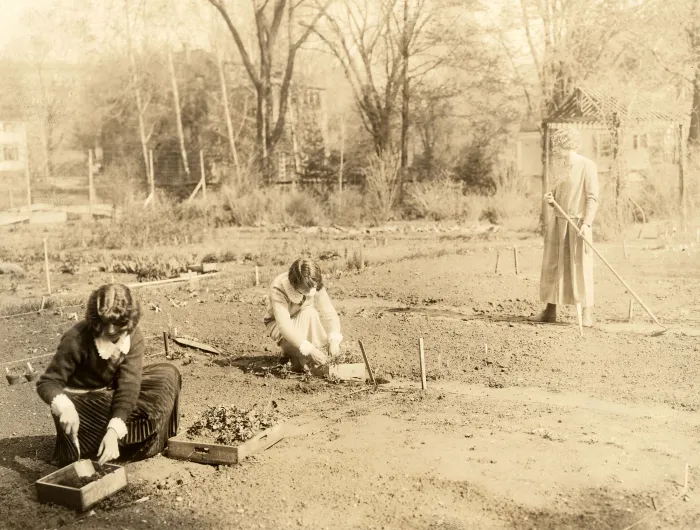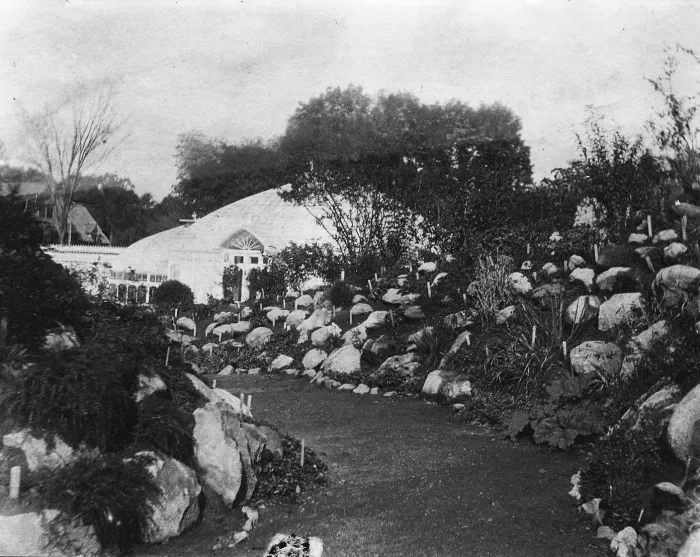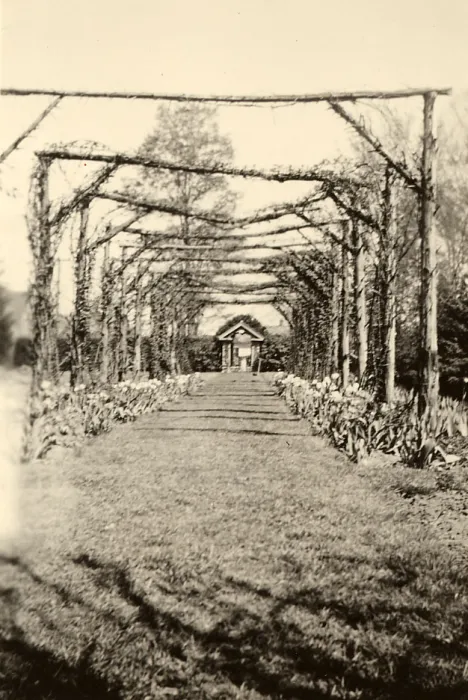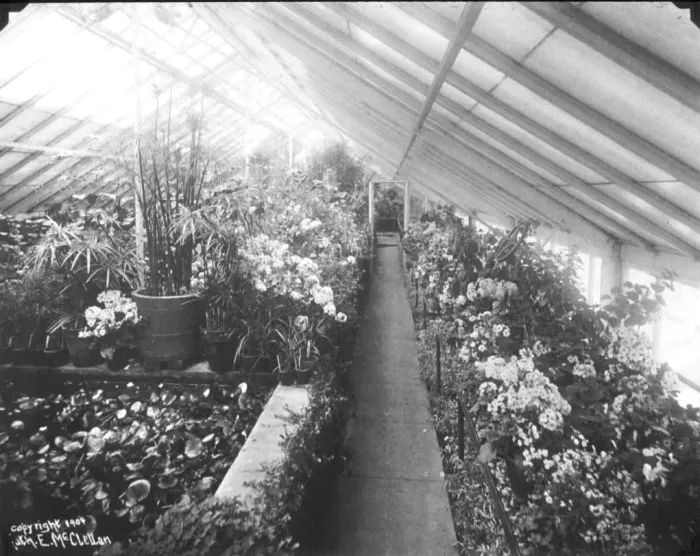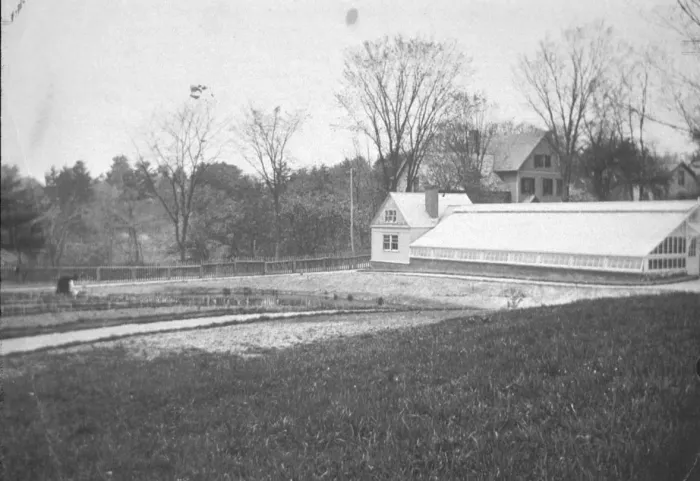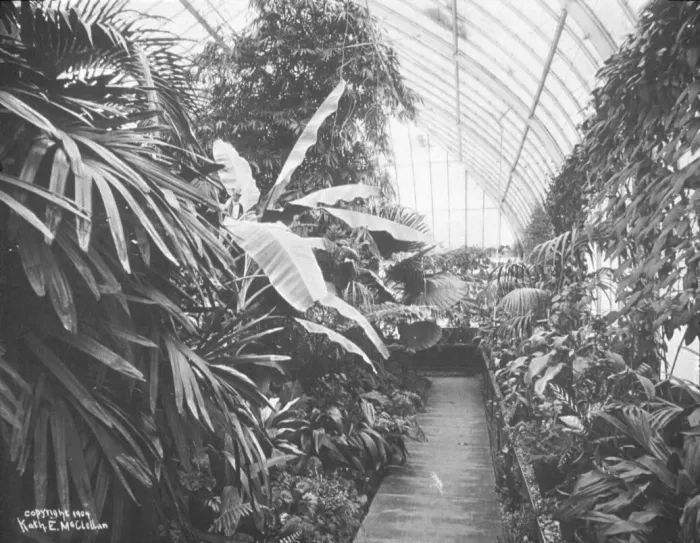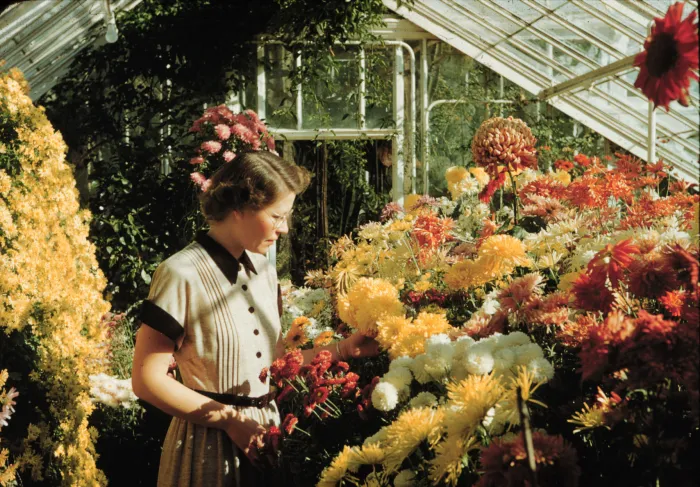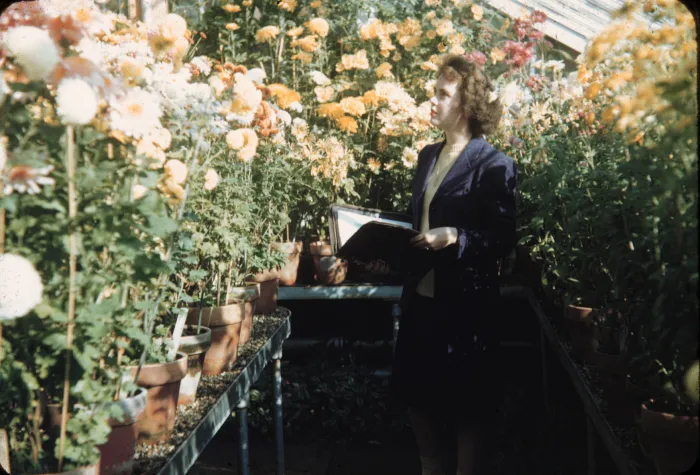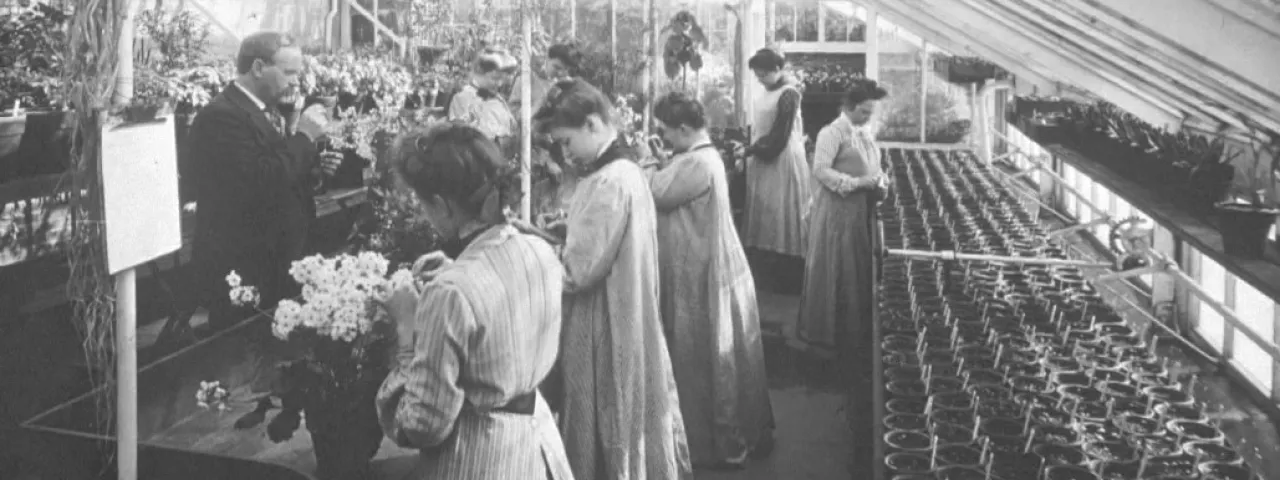
Our Roots
Since its founding in 1895, the Botanic Garden of Smith College has been devoted to teaching, public education, scientific research, and beauty. Smith’s first president, L. Clarke Seelye, believed in science education for women. From the start he envisioned the Smith campus as a botanic garden.
Seelye's vision to establish the entire Smith College campus as an arboretum and botanic garden began to take shape in 1892, when the landscape architecture firm F. L. Olmsted & Company started work on campus planning. By 1894, a small greenhouse and potting shed were in place and serving as a nursery for landscape plants.
As the greenhouse was expanded to accommodate a burgeoning collection of plants, the botanic garden’s first director, William Francis Ganong, took over the task of planting the campus arboretum and establishing formal gardens. With the construction of Victorian-style Lord & Burnham glasshouses in 1895, which stand to this day, the Botanic Garden of Smith College was inaugurated.
Ganong continued to expand the garden, establishing the Systematics Garden, creating the Rock Garden, enlarging the campus arboretum, and expanding Lyman Plant House. In 1900, the first horticulture classes were taught at Lyman–and they are still offered today. Over the years, the botanic garden has continued, and continues, to grow to meet the expanding needs of the students, staff and community.
